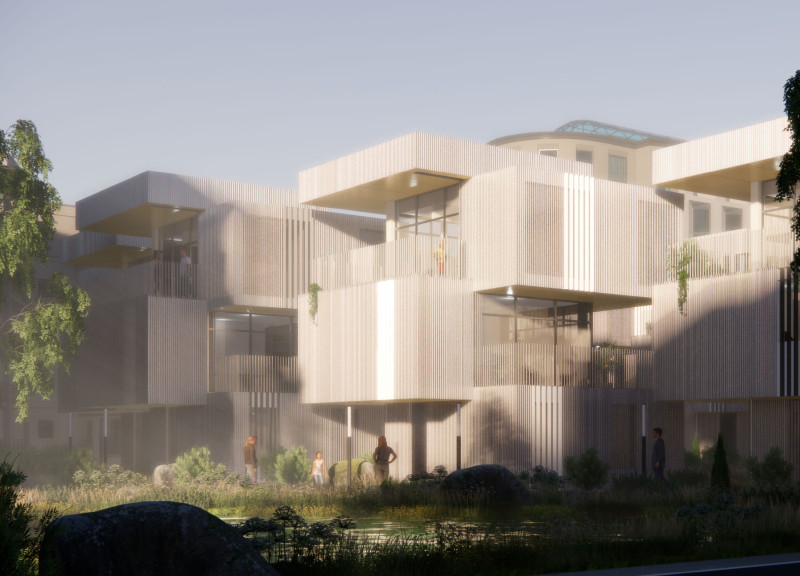5 key facts about this project
The project is located in the historic center of Berlin, addressing the need for housing in a densely populated urban area. It focuses on revitalizing previously neglected sites by creating a community-oriented living environment. The design concept combines elements from classical and modern architectures, promoting a blend of comfort and functionality while fostering social interactions among residents.
Conceptual Framework
The design centers around small communal areas that sit alongside larger suburban units. These spaces encourage neighborly connections, creating a vibrant community atmosphere. The inclusion of smaller housing units features gardening allotments, which allow residents to engage with nature, promoting a holistic living experience.
Design Development
The initial stages of the design use simple vertical walls to define the facades. Each unit is compact, providing an effective use of space while allowing for clear architectural expression. The floors are strategically offset, creating outdoor spaces that offer both privacy and shade. This practical approach aligns with modernist principles and emphasizes the functionality of each living space.
Community Engagement
Incorporating communal courtyards is key to enhancing social interactions among residents. These shared areas promote gatherings, fostering a sense of belonging in the neighborhood. The merging of mass-produced housing elements with individual suburban units addresses a range of social classes, contributing to an inclusive living environment.
Construction and Material Strategies
The construction strategy emphasizes flexibility through replaceable parts in the floor plans. Structural support is provided by steel beams, ensuring durability. Metal panels and vertical louvers further enhance the buildings' performance and appearance. These material choices reflect a sustainable approach that is in line with modern construction practices.
The design concludes with an asymmetrical visual character that enhances density while respecting the historical surroundings. It integrates well into Berlin's urban landscape, creating a relevant addition to the city's evolving architecture.



















































